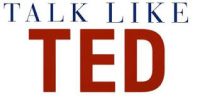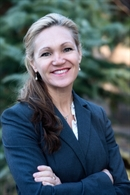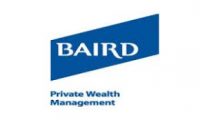CNL’s mission is to help nonprofits become the most effective organizations they can be, and effective organizations MUST assess and evaluate all areas of their business. Performance assessments often raise concern and even fear. Many people associate them with judgment, unfairness, and the need to defend one’s actions.
However, without appropriate monitoring and feedback, it is difficult to figure out whether you, your board, and your organization are meeting goals and making progress. In a nonprofit, there are three different types of assessment that the board should undertake on a regular basis: its own self-assessment, performance assessment of the executive director (E.D.), and organizational assessment of overall health and development needs moving forward.
Board of Directors Assessment
Every board should assess its own performance on a regular basis to see where improvements need to be made. There are numerous tools available to facilitate the task. As Board assessments are being done, it is important to make sure that adequate time is given to implement any recommendations and affect change. And, as Susie points out above, it is good to use the same assessment for a while in order to see change over time.
Some of the benefits of board self-assessment include:
- clarifying the responsibilities of the board and individual board members — and creating a mutual understanding on what these should be
- directing the board’s attention to issues that it may be neglecting or not performing as desired
- sending a message that governance is important and that doing it well allows the board to better serve the organization
A board also should determine how it handles individual board member assessment.
This could easily be tied to the full board assessment process by asking board members to rate their own performance at the same time. This gives board members an opportunity to see how they are doing and reflect on how much they are contributing and whether or not they want to stay on the board.
Some boards conduct peer evaluations—asking board members to evaluate the contributions their peers are making to the board work. It is probably best to have the executive or board development committee coordinate this effort and communicate with individual board members privately to determine together whether any changes are needed and to give necessary support or accolades for commitment. Under any circumstances, it is a good practice to assess every board member’s performance before a new term is granted.
Assessment of the chair’s performance can be performed by the executive committee or the entire board can provide comments through an anonymous and confidential process. No matter who participates in the evaluation, the results should be communicated to the chair in a private meeting. This evaluation provides the chair with feedback on his or her style, leadership, and facilitation skills; his handling of the board’s challenges and key focus areas; and his capacity to keep board members engaged.
Executive Director Assessment
Every board should carry out an E.D. performance evaluation on an annual basis—and keep a written record of the results as a way to protect both the executive director and the board. The process should rely heavily on the job description for the position and the previously identified priorities and projected accomplishments for the year. To be fair, the process should be mutually agreed upon, and the performance goals should be measurable.
In addition to providing constructive feedback for the E.D. on what works and what doesn’t, the process allows the E.D.to feel more comfortable about her/his own strengths and areas in need of improvement. Even though salary adjustments should be based on performance, the actual discussions on compensation should be separate from the performance evaluation process.
Organizational Assessment
Most boards monitor the organization’s financial performance on a regular basis by reviewing the financial statements prepared by staff and comparing them to the previously approved budget. In their reports for board meetings, program directors elaborate on the triumphs (and hopefully also on the shortfalls) of the programs to allow the board to judge which activities most successfully meet the goals. A dashboard report — succinct performance indicators that can be read at a glance — is a practical and quick tool to set the overall performance record straight.
It is relatively easy to determine the quantitative measures for accomplishments. Quantitative data—we feed 200 homeless individuals daily—do not necessarily tell the full story, however. To assess how well the organization fulfills its mission often goes beyond bare numbers. When it is not possible to draw a direct link between the work of the organization and the improvements in the community, it helps to identify the extent to which individual customers or clients feel the impact of the services. Qualitative data present valuable success stories (i.e., the services provided by the shelter helped a homeless person find a job and permanent lodging). When methodical surveys of all the constituents are not possible, anecdotal feedback can help tell a story. Together, raw numbers and stories of changed lives provide a more comprehensive picture of the organization’s accomplishments.
Did you know that CNL covers some of these areas in our various programs and services: Board Evaluation basics is included in our Board Essentials workshop, offered twice a year. The upcoming E.D. Academy will focus on Strategic Leadership and both the E.D. Socials and Board Exchanges are great forums to share evaluation tools and help one another in implementing better evaluation processes in our organizations. Of course, you can always enlist a consultant from the C&C Network to assist your organization in the evaluation process, whatever it might be.

 Whether you are an executive director, staff or board member, this is an opportunity to ensure that you and your organization have the understanding and knowledge to be good financial stewards in today’s world of expected transparency.
Whether you are an executive director, staff or board member, this is an opportunity to ensure that you and your organization have the understanding and knowledge to be good financial stewards in today’s world of expected transparency.



 organizations and small businesses to reach their maximum potential, they must be able to communicate their ideas and tell their stories in ways that capture the attention of partners, donors, volunteers, and the public.
organizations and small businesses to reach their maximum potential, they must be able to communicate their ideas and tell their stories in ways that capture the attention of partners, donors, volunteers, and the public. Join CNL and presenter, Janice Dunn, to find out what a TED talk is and how you can create and deliver one of your own!
Join CNL and presenter, Janice Dunn, to find out what a TED talk is and how you can create and deliver one of your own!
 Organizational retreats are useful occasions to get away from day to day operations to focus on building trust, strengthening staff relationships, and educating people on some aspect of the organization’s mission, strategic goals and operations. Where to start? What topics might be addressed? How much will it cost?
Organizational retreats are useful occasions to get away from day to day operations to focus on building trust, strengthening staff relationships, and educating people on some aspect of the organization’s mission, strategic goals and operations. Where to start? What topics might be addressed? How much will it cost?